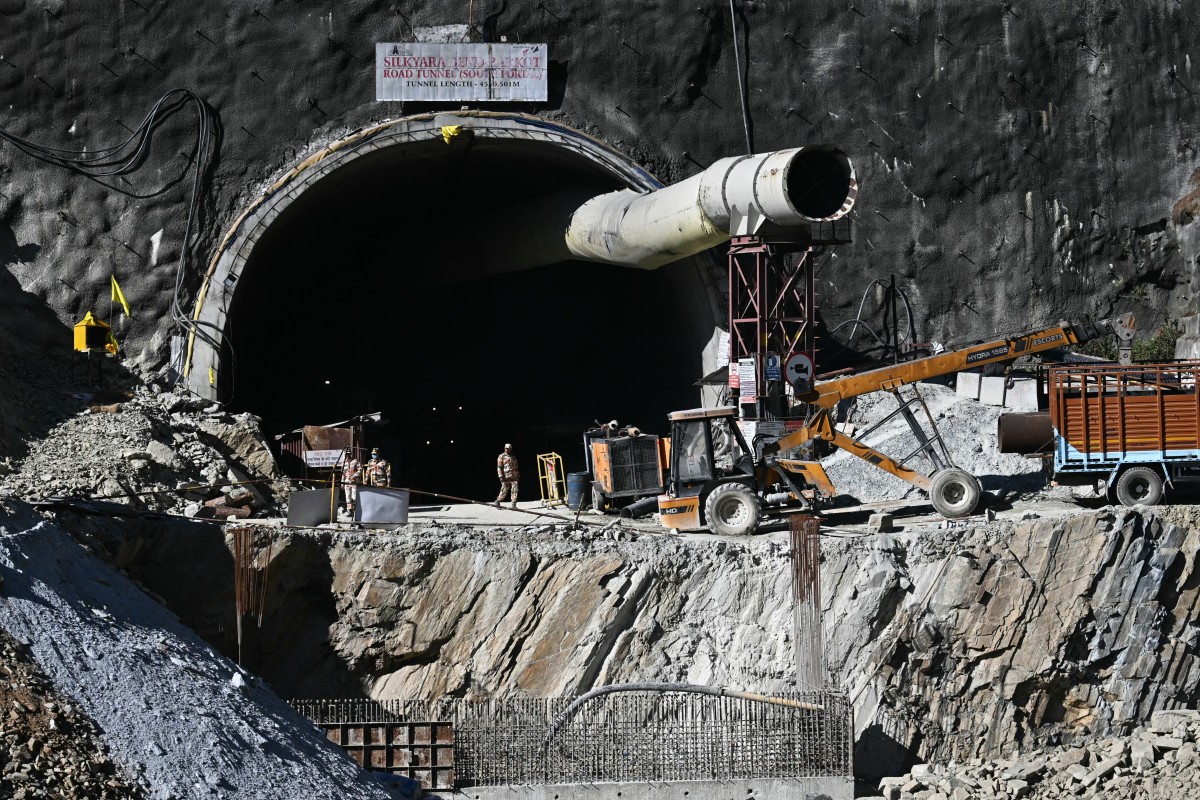
PATNA, India– Ever since his son was trapped behind tonnes of rubble when the Indian road tunnel he was building collapsed 10 days ago, Munnilal Kishku has barely slept.
All that he and the other family members waiting for the release of the 41 workers can do is pray -- and hope the government's promises that all is being done to rescue the men will result in success soon.
"We never could have imagined a situation like this," Kishku told AFP from his village in the eastern state of Bihar, one of India's poorest.
He said his family were suffering "sleepless nights" as they waited.
Excavators have been removing tonnes of earth, concrete and rubble from the under-construction tunnel in the northern Himalayan state of Uttarakhand since November 12, when a portion of it collapsed.
But rescue efforts have been slow, complicated by falling debris as well as repeated breakdowns of crucial heavy drilling machines.
- 'Praying for divine blessings' -
Since the collapse, Kishku has had no word from his son Virendra, who is in his mid-twenties and, like most of the other trapped men, a migrant worker who left home to find employment elsewhere in the country.
"It is a tough time for us," he added. "We are regularly praying for divine blessings."
"We are hopeful that he will return safely."
Some of the family members of the trapped workers are camping near the tunnel, waiting in desperation for any news, with state authorities offering them accommodation and transport.
The workers were seen alive for the first time on Tuesday, peering into the lens of an endoscopic camera sent by rescuers down a thin pipe through which air, food and water are being delivered.
Abhishek Sharma, a psychiatrist appointed by the government to oversee the mental health of the trapped workers, said he had been giving the men advice.
"We've kept constant contact, suggesting activities like yoga, walking, and encouraging conversations among them to maintain high morale," Sharma told the Indian Express newspaper.
Seeing their loved ones -- exhausted, anxious, but alive -- was a huge boost for those frantic for their rescue.
"Initially there was hopelessness due to little information," said Monu Vishkarma, whose brother Sushil is one of the men trapped inside and also hails from Bihar.
"Now we are hopeful of a safe rescue soon."
After problems in the main tunnel -- with drilling machines hitting boulders, and fears of a further cave-in -- rescue teams are now preparing two new approaches to reach the men.
One of the proposed routes, which involves starting from the other end of the tunnel, is nearly half a kilometre (over a quarter of a mile) long.
The other is a vertical shaft that, despite being far shorter, at around 89 metres (291 feet), is complicated by the fact that it involves digging above the men in an area that has already suffered a collapse.
Villagers have set up a Hindu shrine at the mouth of the tunnel to the local god, Boukhnag, saying the original temple had been moved during construction, which some have blamed for the collapse.